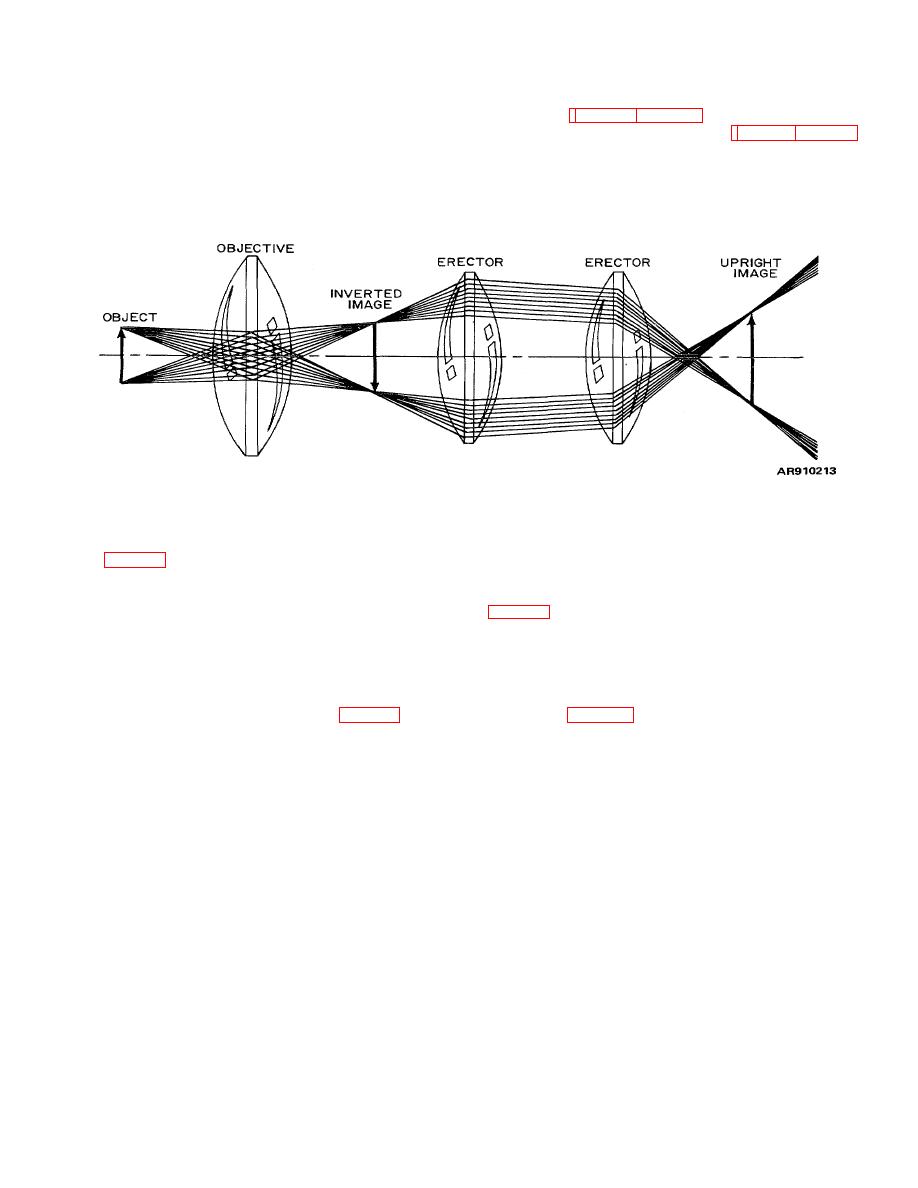 |
|||
|
|
|||
|
Page Title:
Figure B-13. Lens erecting system. |
|
||
| ||||||||||
|
|
 TM 9-258
normal erect when in coincidence except for the
objective. An erecting system may consist of one or
presence of the halving line.
more lenses (figs B-13 and 4-20), each of which is called
Erecting system - Lenses or prisms, the function of
an erector, or of one or more prisms (figs 4-21 and 4-11).
which is to erect the image, that is, to bring the image
upright after it has been inverted by the
Figure B-13. Lens erecting system.
Erector - One of the lenses of a lens erecting
Extra-foveal vision - Vision in parts of the retina
system (fig B-13).
other than fovea.
Esophoria - A condition of the eyes in which the
Eye distance or eye relief - The distance from the
lines of sight tend to turn inward.
rear surface of the eyelens to the plane of the exit pupil
Etching - The marking of a surface by acid, acid
should be situated in this plane. The center of rotation of
fumes, gas, or a tool. A process extensively used in the
the eye is about 6 millimeters behind the vertex of the
manufacture of reticles.
Exit pupil - The diameter of the bundle of light
cornea.
Eyeguard - See eyeshield.
leaving an optical system. The small circle or disk of
Eyelens - The lens of an eyepiece which is nearest
light which is seen by looking at the eyepiece of an
to the eye (fig B-14). See eyepiece. Various types of
instrument directed at an illuminated area (fig 2-53). Its
lenses are used for this purpose.
diameter is equal to the entrance pupil divided by the
magnification of the instrument.
Exophoria - A condition of the eyes in which the
lines of sight tend to turn outwardly.
B-13
|
|
Privacy Statement - Press Release - Copyright Information. - Contact Us |